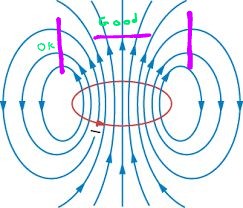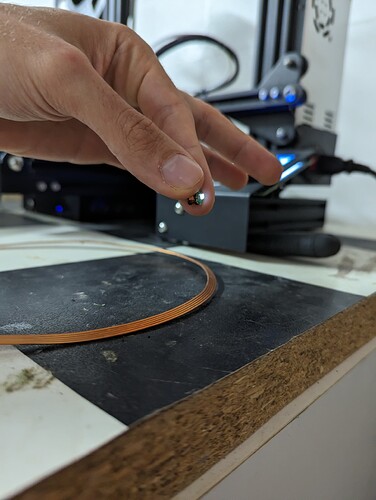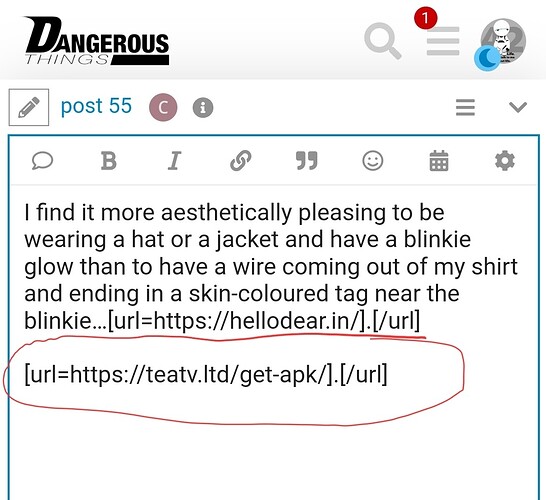If you have to wear the hat for it to work, why not just make it a wearable entirely?
What’s the point of getting a tattoo? Can’t you just draw it on?
That question applies to literally every blinkie implant.
All of them require external power sources, and currently there are a couple other threads here about making bracelets and necklaces to power other blinkies…
Plus, the has is only one of the available options
You can embed coils on glasses, pick up your phone with NFC on, etc…
Yes, and I’m disappointed with all of them ![]()
Maybe you could make this implant be a small LED implant with a coil embedded, and then cover the LEDs with resin full of glow powder. That way you don’t need to have such a huge area of skin separated for both the light and the coil, you can just light it up for a minute with your phone or a small keychain transmitter and then it will remain glowing for like 20 minutes.
Tattoos don’t need hats
I got some of those.
The resin does add a glow, but it’s a very short lived glow even if you charge it for an hour, the glow fades after a few seconds.
Even on a perfect LED to powder colour match, the fact it keeps the shine visible for a minute or two on the implant… still ends up being only a very short lived glow when under the skin (fades to unnoticeable way faster than while not implanted).
don’t get me wrong, if it’s a single colour blinkie, I would add the glow powder again every time!
It does pump up the brightness a tad bit and adds a neat lingering effect!
But it would get in the way of an RGB or programmable LED… and for this project, I’m envisioning a programmable RGB LED ring.
For what I see of this, especially if implanting on the face/head… that’s the way to go.
I still haven’t seen a solution that justifies the 2-part implant design.
Yes, it would allow for a smaller power source (more energy efficient), but at the same time… the energy source could be hidden away in a jacket/hat/glasses/etc…
So it doesn’t justify the large scar you end up on the face for a 2-part implant, the added risk of component failure and the much higher rejection risk.
Also, I find it more aesthetically pleasing to be wearing a hat or a jacket and have a blinkie glow than to have a wire coming out of my shirt and ending in a skin-coloured tag near the blinkie…
But that’s my personal opinion.
I randomly found an old video I took of the coin-shaped receivers I lost and mentioned here before.
See what I mean about turning it sideways and loosing all the coupling from that? You can have it right up against the windings sideways and even so the coupling is very poor. That won’t be viable in an implant form factor.
The coupling is definitely diminished but not completely lost. In fact all around the edge of the emmiter coil is kind of a sweet spot where as the field lines curve they become perpendicular to the emmiter and align with the receiver (granted they are less dense but definitely still enough).
In this video I’m doing it right in the middle where obviously this doesn’t happen but in the case of the necklace-neck setup it’s the perfect alignment.
Did you see the photo where I actually tried it? Works beautifully
One more thing you’re maybe not considering is that the ones from the video are air-cored but that is not the case of most of these wireless LEDs and that matters. In fact rfid glassies are cored coils and they work exacty in that way: perpendicular around the edge of the scanner.
All of that is true, and I’m very familiar with the field mechanics. The problem is for that transverse coupling scenario you’re describing the receiving coil needs to be right on top of the transmitting coil. In most cases a centimeter away is far too much. Whereas with the coplanar coupling scenario shown in the older video you found, you could achieve 3-5cm distance.
What you’re suggesting may work, but we need to test it with the intended transmitter coil which is wide enough to fit around your whole head. That size difference between the transmitter and receiver makes the coupling factor even worse because there’s an even low flux density traveling through the center of the receiver than your example. If we need to cover up the edge of the implant with the transmitter it hardly seems worth it. That was why v1ckie came up with the two part implant in the first place (which is a great idea except for the install difficulty, which some people might not mind).
It seems like it would be better to just figure out a way to design the implant to have it’s coil coplanar with the transmitter.
Well… initially I thought the same but since these (probably not great quality) chinese LEDs can achieve 5+ cm with such a huge difference in coil sizes I think it’s wort a try
This is less than 1W to the emmiter including the heat losses. What I’m saying is a beefy emmiter + a well tuned much larger receiver seems viable.
Edit: actually works up to 6-7cm and there’s a ± 4 cm margin for error on the horizontal alignment to the edge
Fair enough
+1 to exactly that.
is it a setup that would bleed performance? Yes.
But is there a better option? Not yet.
Are you a bot?
Sounds like it…
Un a completely unrelated note, I want to become a bot… Can you help me with this, @Pilgrimsmaster?
I just noticed the last few dots in their post are a hyperlink to an apk. Looks like they’re up to something nefarious. Gonna flag the post
Damn! I’ve missed that! ![]()
Also… why a chunk of my post was repeated there? ![]()
Trying to sound legit, is my guess
I think this what you are trying to do, I bought an earphone in Ali express back in 2020 and it got this awesome led circle effect but opening it up it doesn’t have any LED also it is transparent those tiny silver that connects to button that powers it up creates the LED light in the plastic.



